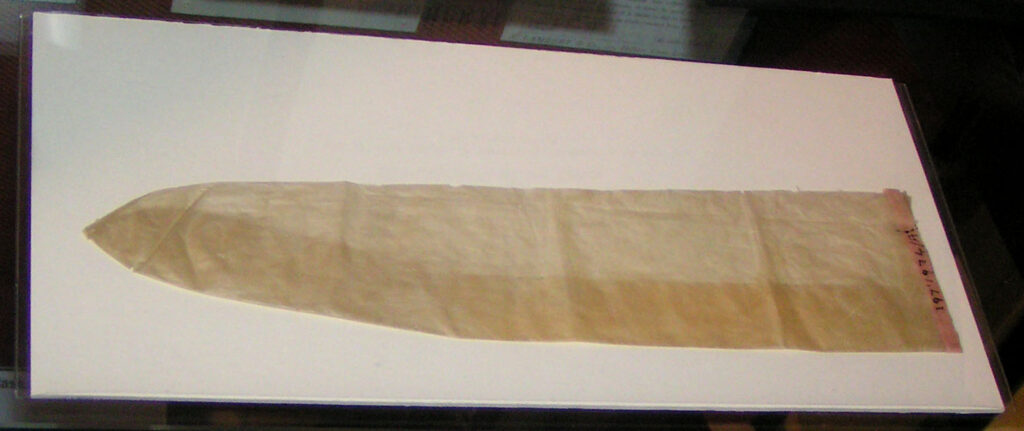Condoms: A History

About 15 years ago, I spent a year in Ohio. That year, I went to the Ohio state history museum and they had an exhibit of some of the “controversial” objects that they owned. Some were legit pretty fucked up–the electric chair. And honestly even worse, this horrifying box where they used to lock disturbed kids in institutions, I mean, good lord. That was weird. But this other object was a 19th century condom. And the thing, I’m not going to lie, it was enormous. It was a giant sheepskin thing and reusable. The reason it existed is that some ship captain used it as a bookmark and it was discovered inside his book. The museum had one of those modern things where visitors could leave feedback. More than one person put up a sticky note that said something like “I wish I could meet the man who fit that condom!” LOL!!!
Well, that came to mind when reading about this old condom in this Dutch museum:
It’s an illustration that would be racy even by today’s standards: A nun points her finger at a trio of clergymen, who raise their robes to reveal their aroused state. Her bare legs are splayed open, in a bizarre and humorous exchange.
If that wasn’t risqué enough, the drawing was printed on a condom nearly 200 years ago and is thought to have been circulated as a brothel souvenir. Likely made from a sheep’s appendix, the early contraceptive is also inscribed with the words “Voilà mon choix,” or “This is my choice” — a tongue-in-cheek jab at celibacy.
The yellowed, crinkled condom made its debut on Tuesday at the Rijksmuseum in Amsterdam. Perched on a tiny stand, it rests among other relics depicting 19th-century prostitution and sexuality in the museum’s print room, which is dedicated to drawings and photographs across various media.
“Only two such objects are known to have survived to the present day,” the Rijksmuseum said in a release. “It reveals that printing was being used in a wide range of contexts.”
Curious readers can get a closer, possibly not-safe-for-work look here.
The origin of the condom — or its derivatives — might date to around 3000 B.C., when it was written that the mythological character King Minos of Crete protected his wife from the “serpents and scorpions” in his semen by inserting a goat’s bladder into her vagina before intercourse. It was said that Minos’s mistress had died after having intercourse with him, leading him to seek further protection from disease. Other interpretations of the story suggest that Minos wore the goat’s bladder himself.
Some argue that condoms made from animal intestines have existed since at least the medieval age. In a lecture about the history of condoms, researcherKate Stephenson said that the earliest evidence of condom use that she found was from 1564, when an Italian anatomist wrote about men using linen cloth made to fit over the penis. Another scholar documented similar methods a few years later, she added.
This is just super to know about. Well worth an LGM post.


